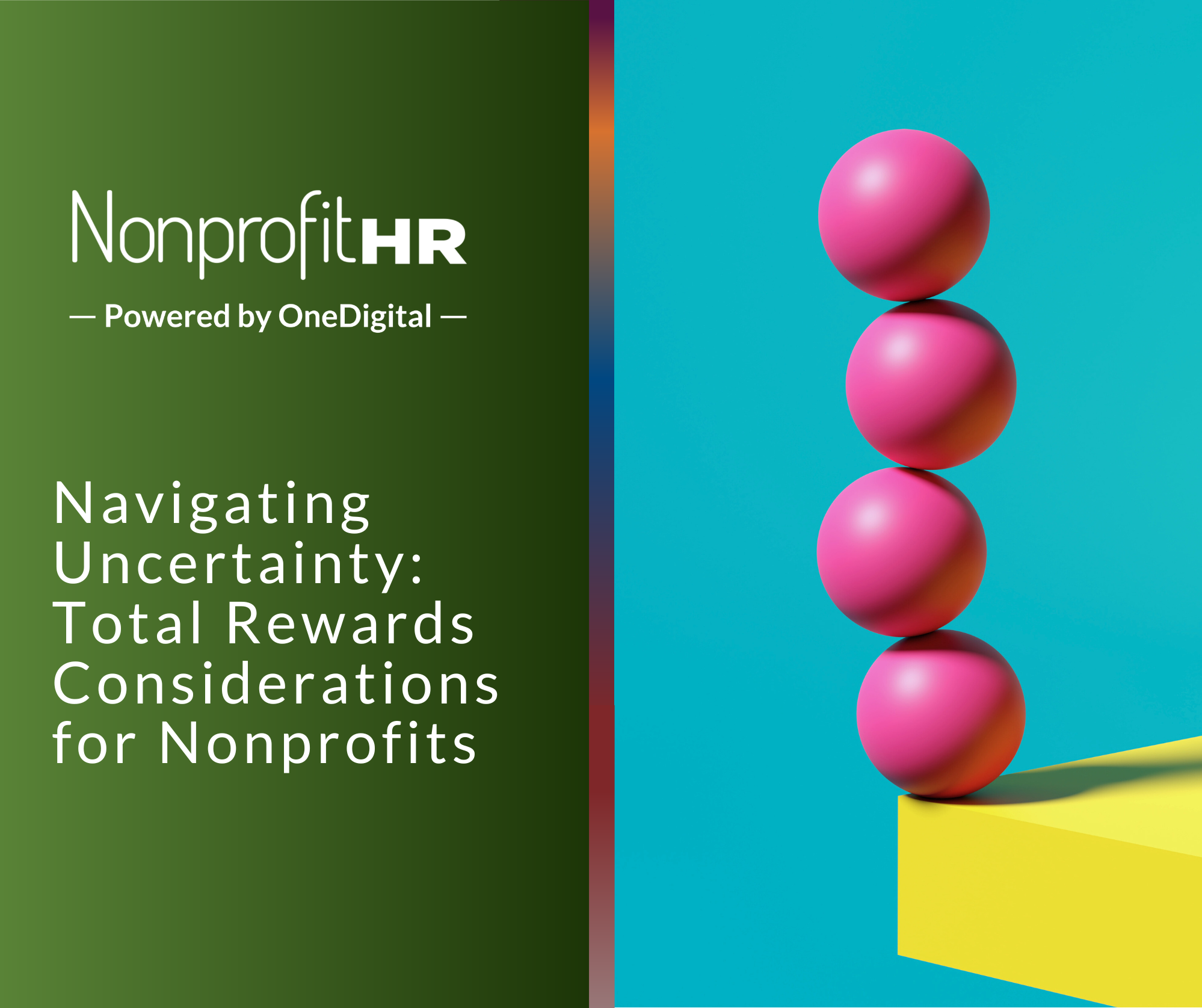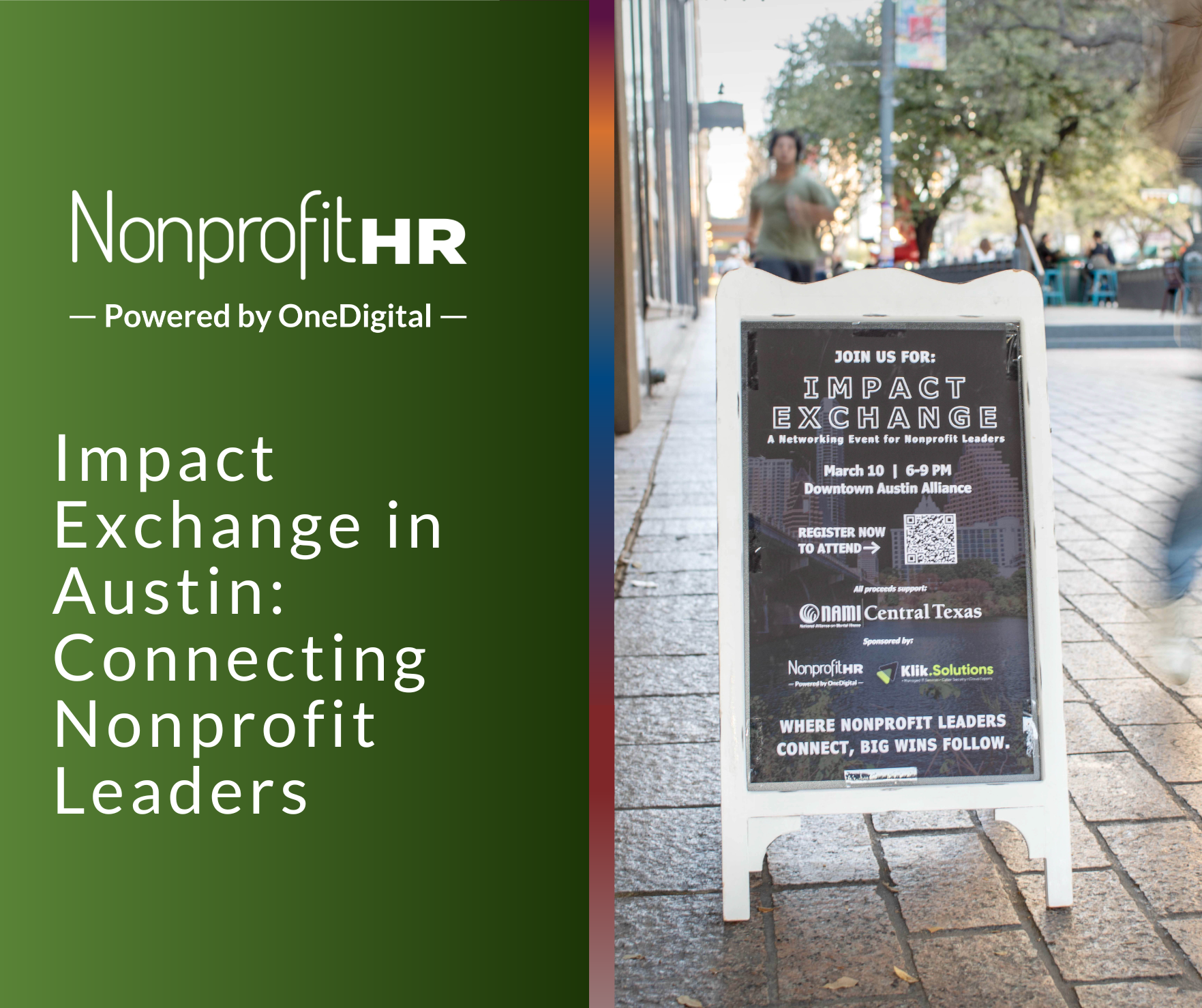WTOP: 5 ways nonprofits can…
Is your nonprofit or association struggling to keep pace with the rapid evolution of skill requirements? Do you find yourself questioning whether your team possesses the necessary competencies to fulfill your mission effectively, both now and in the future? If your organization has yet to integrate workforce planning into its talent management strategy — evaluating current and anticipated needs against the skills present within your team — you may not be prepared for the future from a talent perspective.
As organizations grapple with the ramifications of a constrained labor market, the urgency to address skills gaps becomes increasingly apparent. According to Manpower’s 2023 Global Talent Shortage Report, a staggering 75% of employers are encountering difficulties in filling open positions, a trend mirrored on a global scale. Additionally, the World Economic Forum’s Future of Jobs Report 2023 forecasts that 44% of core skills of workers are expected to be disrupted within the next five years, exacerbating the challenge. This talent crunch not only hampers organizational growth but also poses a direct threat to the fulfillment of their missions.
Perhaps your organization is experiencing this impact now when seeking to find and hire the best talent with the needed skills, while also considering future needs. One major aspect to explore is how likely your current and future employees will be able to pivot when needs change. The good news is shifting to a skills focus can better position your organization to meet talent needs in the future.
Meeting Organizational Needs
As your nonprofit develops strategic plans, it is important that your leadership team assess the ability to meet your strategic objectives and goals. In the social impact sector, having a mission focus is great for talent attraction and retention, however passion for purpose doesn’t always equate to necessary skills and readiness. Aligning strategic objectives with skills needs is growing even more essential for nonprofits. Disruption can have a compound effect when competing for limited talent in highly competitive markets. While it is important to identify needed roles and recruit candidates that have the requisite experience, it is also necessary to factor in that roles can shift. To add a layer of complexity, it is also necessary to know which roles can withstand constant shifts and how well the people in them can keep up with the ever-changing demands. It is crucial to focus on needed skills which can be achieved by deconstructing jobs into skills in addition to desired experience.
Once your organization has identified key skill needs, you are in a better place to identify skills gaps among your staff. Rather than just hiring new staff to address those gaps, you can consider the wealth of untapped talent within your existing teams. By identifying internal talent who either have the needed skills or have the ability, readiness and interest to be reskilled or upskilled, your organization can often meet its needs without hiring new talent. Internal talent mobility programs aimed at upskilling and reskilling is one solution that can foster employee retention and help decrease the costs associated with turnover, and, if you have to acquire additional talent, the costs of onboarding and bringing new hires up to speed.
Ensuring a Positive Employee Experience
Focusing on skills in the hiring process not only provides more opportunity for a diverse pool of candidates, but it also provides applicants the opportunity to share the full breadth of their skills beyond what is typically listed in a job posting. Candidates knowing that they will be able to flex different skills and have career growth within a company helps with attracting talent and enhances the candidate experience.
Providing upskilling, reskilling and internal mobility opportunities for your existing staff also increases employee engagement. If your employees feel the organization provides learning and growth opportunities and has a clear career development path for them, you are more likely to see deeper engagement and stronger retention. According to a Pew Research Study of employees who left their jobs in 2021, 63% cited lack of advancement opportunities for leaving. Though this research covers sectors beyond social impact, the data still offers an opportunity to reassess whether your organization has developed career paths demonstrating your commitment to employee growth.
Implementation
So how can your nonprofit prioritize a skills-focus as part of your talent management plan?
- Deconstruct jobs into skills – As your organization seeks to align roles to strategy, breaking down jobs and projects into skills that are needed to achieve the work or desired outcomes becomes the aim. Skill sets for jobs have changed rapidly, notably by 25% from 2015 to 2023. Consider how some of the roles you’ve already filled have changed. You’ve likely seen skills identified for jobs evolve since hiring occurred. This is one simple way to demonstrate your nonprofit’s need to prioritize upskilling and reskilling by constantly re-evaluating skill needs.
- Take inventory of staff skills and interests, especially outside of their current roles – Regularly survey the skills of your staff. Employees gain skills in their current roles, but also have skills from previous jobs or have flexible skills that can be further developed or aligned with other needs. Larger nonprofits tend to benefit from the tools out there to aid in this tracking. Smaller nonprofits can also achieve this with less sophisticated means, even if just through a spreadsheet. Once skill needs have been determined, organizations can review this skills inventory against what is needed and identify those staff that have the requisite skills.
- Foster a learning environment – Promote continuous learning and hire staff with a growth mindset. According to LinkedIn Learning’s 2024 Workplace Learning Report, 7 in 10 people say learning improves their sense of connection to the organization and 8 in 10 say learning adds purpose to their work. Organizations should provide learning and development resources for staff and encourage staff to stay abreast of trends in their field. These resources will vary by organization due to budget and mission, but also should address individual learning styles. Professional development resources could include training, access to online learning, and sharing of knowledge from peers. Continuous learning not only benefits employees, but it can foster innovation. Is your organization equipping managers to have effective coaching and development conversations with their team members? Doing so can help them identify strengths and gaps in demonstration of competencies and skills. You can also provide support for employees to gain new skills and achieve career growth. Effective managers recognize the impact of learning and skills agility on performance and reinforce such growth.
- Identify cross-training and shadowing opportunities – One of the best ways to learn a new skill is to shadow someone who aptly demonstrates that skill and then try out the skill yourself. Organizations can provide shadowing and cross-training opportunities to upskill and reskill employees, focusing on skills the organization needs now or in the future and aligning staff readiness and interest with these opportunities. In order to make this a reality leaders should encourage the sharing of talent and collaboration across the organization. Employees should also be empowered to own their development and seek out opportunities to learn from others.
- Value agility and resilience – In addition to technical skills, nonprofits should value the “soft” or often termed “essential” skills, particularly agility. It is key to hire and identify employees who can adapt and smoothly transition between roles and needs. These qualities make it easier to pivot as needed.
- Develop career paths – Employees desire clarity on how they can progress within an organization. We often refer to a career ladder, but different terms are also used such as career portfolio and career lattice since growth isn’t always upward or linear. This progression can often be realized by taking on roles in other areas of an organization or by tackling stretch assignments. In an environment of constant change, employees can be more successful if they demonstrate career resilience and are open to different growth opportunities. Nonprofits should provide them with a roadmap for growth within their organization.
Outcomes of A Skills-Focus Approach
Agility remains central to people management strategy in this rapidly changing environment. Proactively positioning your organization’s people to optimize their existing skills and easily gain new ones will ensure greater success for capitalizing on new opportunities and responding swiftly to disruption. Through upskilling and reskilling, your organization can enhance the employee experience, foster innovation and ensure an agile workforce able to sustain mission impact.
Looking for more best practices to develop and build your skills-focused talent strategy? Download our one-pager!
Contributing Author
Alicia Schoshinski, MA, SHRM-SCP, sHRBP, SWP
Chief People & Culture Officer
Nonprofit HR
As the Chief People & Culture Officer at Nonprofit HR, Alicia Schoshinski leads the development and execution of the firm’s talent management strategy. She partners with other leaders to implement programs and policies that drive employee engagement, retention and development. Alicia enjoys helping to bridge relationships with employees and managers, and fostering a values-led culture. Prior to this role she served as a Senior Consultant on the firm’s Outsourcing team, working with clients to provide a talent management strategy aligned with their strategic goals and missions. She also co-led the firm’s Knowledge practice, developing and facilitating workplace learning and information sharing. See full bio.






























